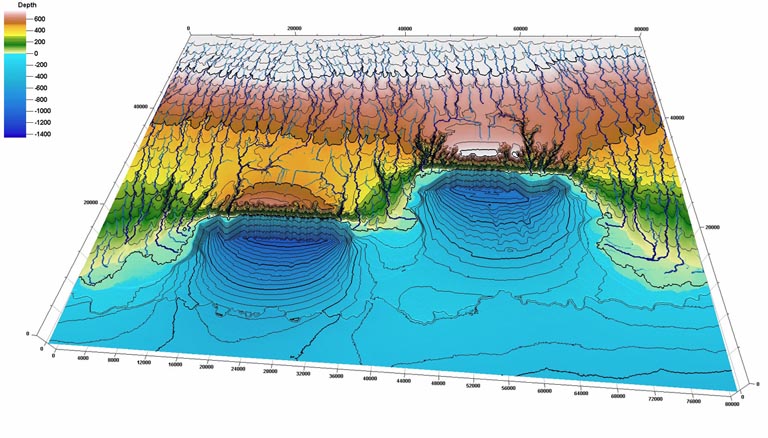
Background/motivation
The overall aim in this project is to develop a fundamental understanding of how pre-existing
structures in both basement and cover influence the evolution of normal faults and associated topographic development and depositional systems. More specifically:
• To investigate how pre-existing basement and cover structures influence the nucleation, growth, interaction and linkage of normal fault segments and their
organisation and evolution within multi-phase rift basins.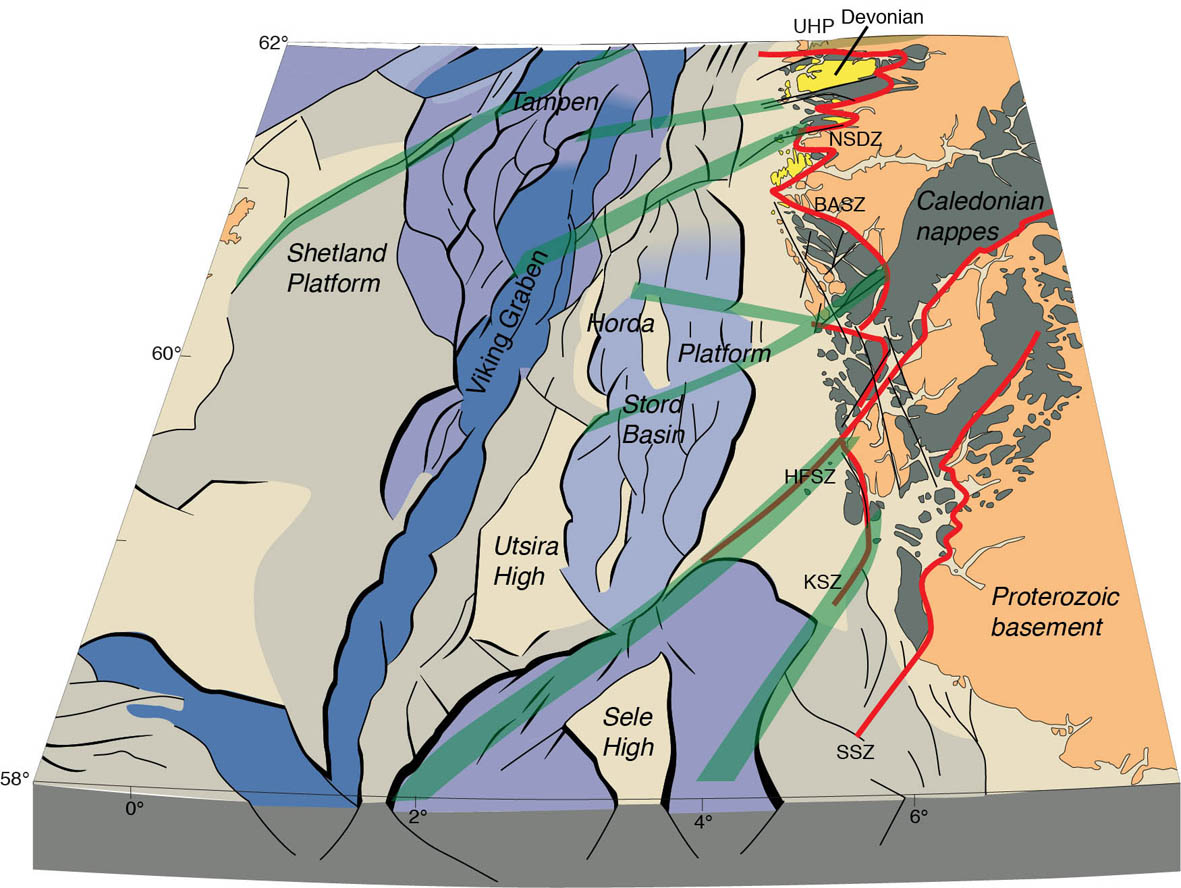
• To determine the role of pre-existing structures in controlling rift topography, sediment sources, major sediment transport pathways and depositional systems in multi-phase rifts.
• To quantify the effects of erosion, deposition and mass redistribution at the Earth’s surface on fault evolution and rift basin morphology where pre-existing structures exert a strong control on fault development.
The part of the northern North Sea that will receive particular attention in the MultiRift project.
Theme 1: Tampen Spur–Horda Platform transect
•Role of basement structure
•Role of pre-existing cover structure
•Impact on sediment sources, transport pathways and syn-rift depositional systems.
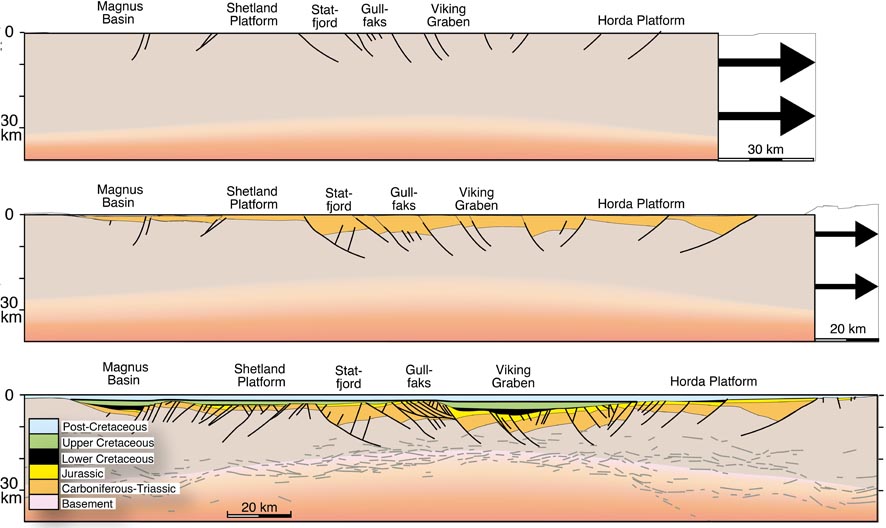 Deep seismic profile, showing the effect of two main rift phases (Permo-Triassic > late Jurassic) by simple restoration.
Deep seismic profile, showing the effect of two main rift phases (Permo-Triassic > late Jurassic) by simple restoration.

Seismic section across the Horda Platform and Viking Graben west of Bergen.

Deep seismic data and onshore observations will be combined with commercial data to obtain a link between onshore and offshore structures.
Theme 2: Numerical modelling of fault evolution
•Role of basement lineaments.
•Role of crustal strength variability.
•Role of changing extension direction.
•Feedback between fault growth and surface processes.
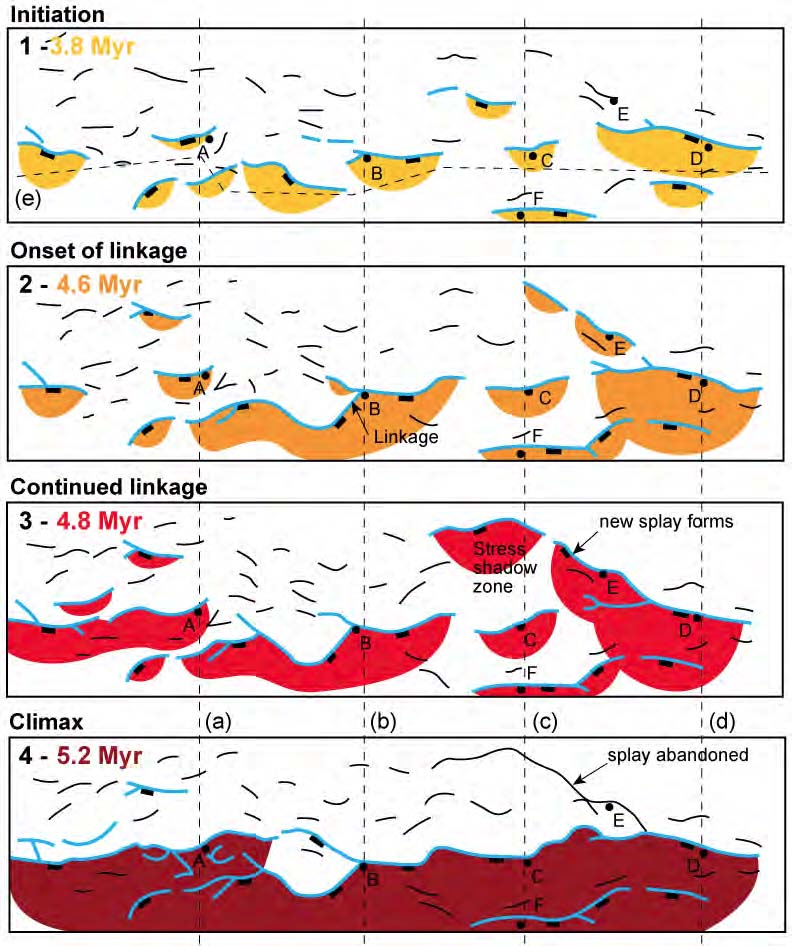
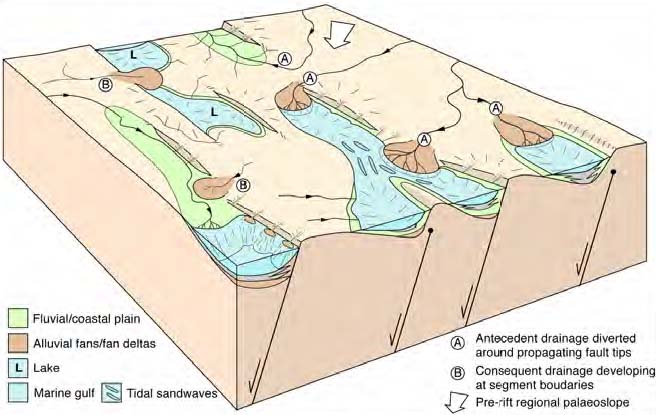
Example of numerical modeling of fault population evolution (top; Cowie 2000) and implications for surface evolution.
Numerical modeling of faulting & surface processes
• Impact of pre-existing structure on topographic development.
• Impact of pre-rift topography on syn-rift supply and deposition.
• Feedback between faulting and surface processes.
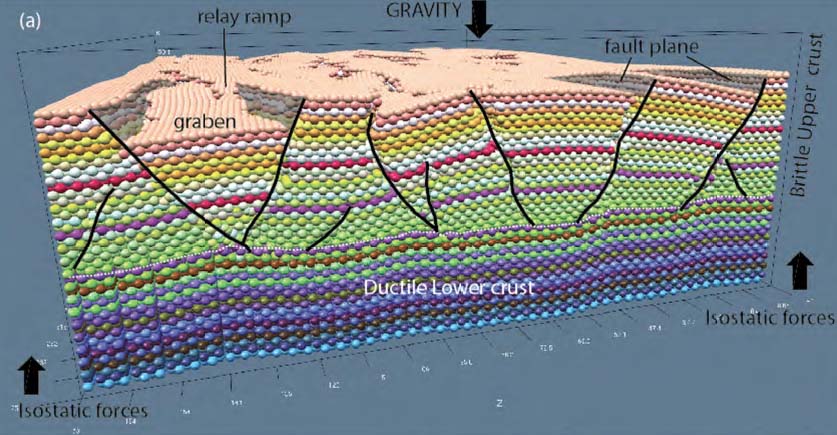
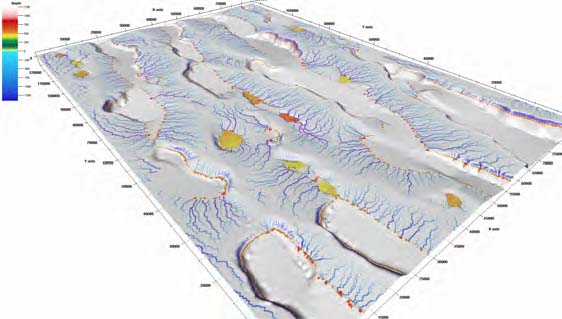
Examples of numerical modeling of the kind included in this part of the project. From Emma Finch.
Who is involved?
Rob Gawthorpe, Univ. of Bergen (principal investigator)
Haakon Fossen, Ritske Huismans, Patience Cowie,
Atle Rotevatn, Eivind Bastesen; Univ. of Bergen
Chris Jackson, Rebecca Bell, Imperial College
Jan Inge Faleide, Roy Gabrielsen, Univ. of Oslo
Emma Finch, Simon Brocklehurst, Univ. of Manchester
Hamed Fazli-Khani (postdoc, U of Bergen)
Rosa Polanco-Ferrer (PhD, U of Bergen)
Chao Deng (PhD, U of Bergen)
Oliver Duffy (postdoc, Imperial)
Johan Claringbould (PhD , Imperial)
Antje Lenhart (PhD, Imperial)
Rifts and rifting
Most of the participants in this project have studied rifts and rift-related processes for a long time. There are still much to be learned about rifts, and the North Sea, with its multitude of data, is an excellent place to study rift basin evolution.

Interplay tectonics–sedimentation
This is not a new subject, but nevertheless a very important one, and one that we will focus on in the MultiRift project. We are literally taking it from the bottom (basement) to the surface as we go through time from the Devonian to the Cretaceous.
